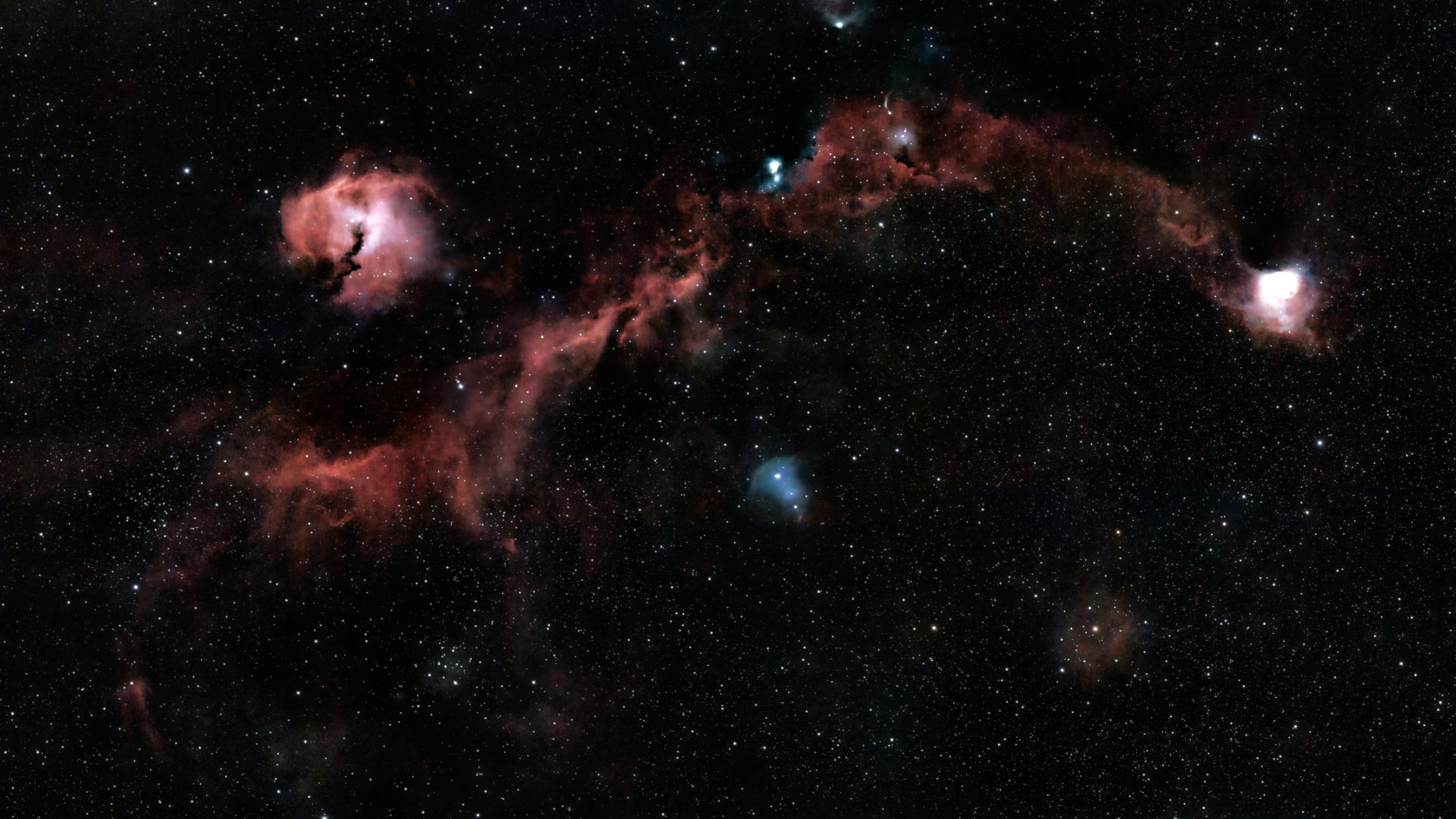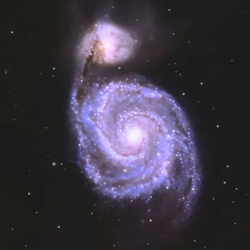The Seagull Nebula is a sprawling region of open star clusters, glowing hydrogen gas, dark dust clouds, and scattered reflection nebulae. Its nickname comes from its distinct shape – suggesting a seagull in flight.
This vast interstellar cloud, made up of dust, molecular gas, hydrogen, helium, and ionized gases, is a stellar nursery where new stars are actively forming.

There is a lot going on in this section of the sky#
Most of the Seagull is composed of interstellar dust and hydrogen gas, which glows a reddish hue after being ionized by energetic young stars embedded within the nebula. Mouse over the image to see where the following objects are:
Sh2-296, forming the “wings,” is a striking example of an emission nebula, featuring glowing hydrogen gas and dark dust lanes that thread between bright, newly formed stars. The nebula’s fantastical shapes and colors arise from the intense radiation of these stars, which both lights up the gas and sculpts the clouds into whimsical forms. These intricate shapes often stir the imagination, leading to nicknames like “Seagull.”
The head of the Seagull, cataloged as IC 2177 or Sh2-292, glows from both emission (reddish) and reflection (whitish). A massive central star is responsible for much of its illumination, and you can clearly see several dark dust lanes cutting across it.
At the rightmost wingtip lies Sh2-297, which glows due to the presence of a hot blue giant star.
Open clusters such as NGC 2335 and NGC 2343 are also visible in and around the nebula. It’s unclear whether they are physically associated with the nebula or simply lie along the same line of sight.
vdB 95, a reflection nebula, shines a soft blue by reflecting the light of its hot, embedded stars—quite distinct from the red glow of the surrounding emission nebulae. You’ll find at least two similar reflection patches in the wing area, along with Sh2-295.
LBN 1038 is another bright nebula in this richly textured field, contributing to the Seagull’s overall complexity.
More Seagull Nebula trivia#
The Seagull Nebula covers a large region of the sky — its wings stretch about seven times the diameter of the full Moon. This makes it too large to capture in a single frame with my telescope-camera setup. To produce the final image, I took exposures of three adjacent sections of sky and used special software during processing to stitch them together into a mosaic.
Despite its size, the Seagull is very faint — over two million times dimmer than the faintest star visible to the unaided eye under dark skies.
The nebula is about 100 light-years across and located approximately 3,800 light-years from Earth.
Pareidolia#
You may recall that I discussed pareidolia here.
Can you imagine something other than a seagull in this image? Maybe a pterodactyl because of the overly large “head”? Or some other kind of dinosaur? How about an enthusiastic dachshund bounding to the left? I’d love to hear your thoughts.
Since the images in this blog are relatively large and contain a lot of detail, if you are using a phone or a small tablet, you might want to consider returning sometime when you can use a computer with its larger screen.
